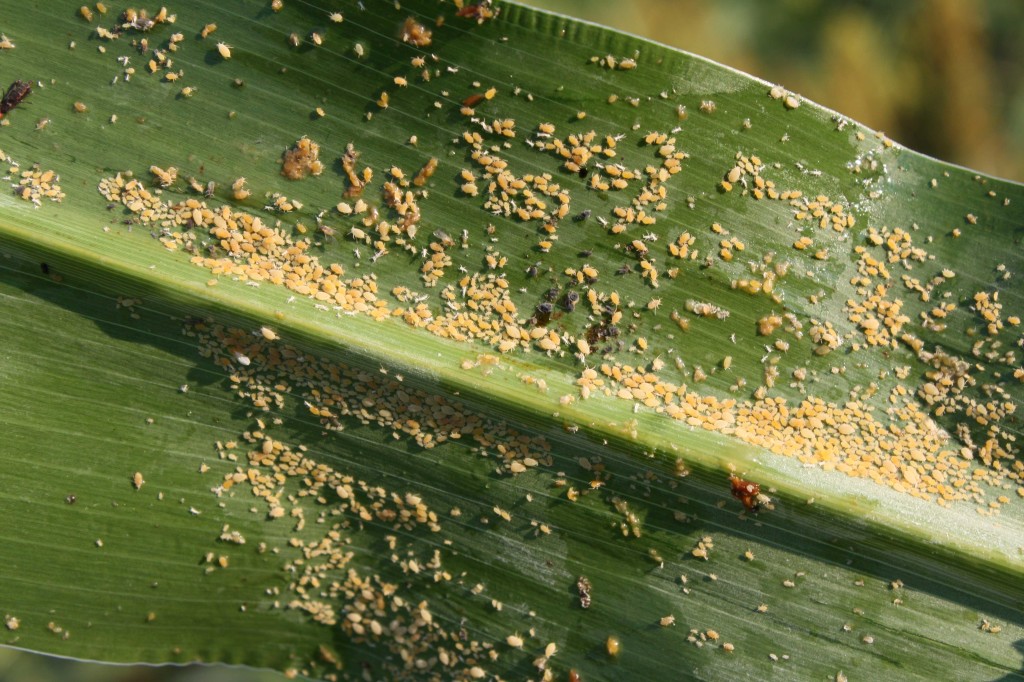Grain sorghum acres are way down this year, but those who are growing sorghum should start scouting for sugarcane aphids now. Based on my counterparts reports in more southern states, I suspect there are already low numbers of aphids in some fields. This pest thrives in hot weather, so populations can spread and build quickly. Serious infestations that go untreated can cause catastrophic yield loss.

As a reminder, SCA infestations generally start on field edges. Aphids will be on the undersides of sorghum leaves or on the stem. Honeydew will accumulate where there is a hot spot of aphids. Current recommendations are to treat when small colonies of aphids are present on 30 percent or more of plants and occasional leaves have 100 or more aphids present. Alternatively, treatment should also be considered if honeydew is present in multiple spots throughout a field and aphid populations are increasing. UT only recommends two insecticides for control of this pest, Sivanto Prime and Transform WG..
- Sivanto Prime has a 2ee label for application in grain sorghum at a rate of 4-7 oz/acre. This insecticide has provided the best residual control of SCA, even at the 4 oz rate.
- Transform WG has an Section 18, emergency use label for 2016 that allows application at 0.75 – 1.5 oz/acre with a seasonal use limit of 3.0 oz/acre. No more than two application can be made per year. However, this product can not be applied during flowering or within three days of the start of flowering. Because pre-flowering infestations have been relatively uncommon in Tennessee, this restriction will likely limit the use of Transform to post-flowering applications, often to prevent harvest complications associated with heavy aphid infestations.
Given the above, I would suggest that you start with Sivanto when treatment is necessary. My previous experience suggests that Transform fits best if a second application is needed once flowering is complete. The sugarcane aphids has a history of rapidly developing resistance to insecticides, so it is important that we use both chemistries.
What about sweet sorghum? Producers of sorghum molasses have really struggled with sugarcane aphids because there are no labeled insecticides. We are waiting to hear about a Section 18 request that would allow the use of Sivanto Prime. I expect to hear something soon because this application was submitted May 11.

